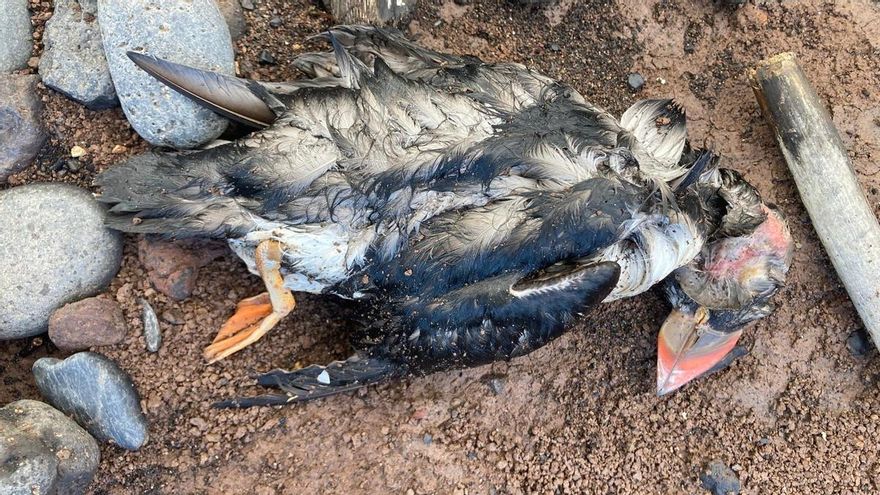
The puffins (fratercula arctica) are small birds with multicolored beaks that live in the cold waters of the North Atlantic and of the North Seamore than 3,500 kilometers from the Canary Islands. They are common on the coasts of northern Ireland and Scotland, in Iceland or in the Faroe Islands. However, in recent days, dozens of these birds have begun to appear on the coasts of Tenerife and the rest of the islands. Only on the northern slope, a hundred puffins have been foundmost of them on the coast of The Silos (44) and from The lagoon (46), as has been advanced Date Digital.
Most of these birds appear dead, but some living specimens have been found on most of the islands, “although they are so weak that it is very difficult to recover them,” according to the Silense ornithologist and naturalist Juan Jose Ramos. They usually die soon because they arrive in very bad condition. This expert clarifies to EL DÍA that the appearance of puffins in these latitudes is an extraordinary phenomenon, which is attributed to the great storms and storms that have hit the North Atlantic in recent times, “which It has coincided with the molting season of this species, which reduces its ability to fly and move».
At the moment, there is evidence of the discovery of at least 140 dead specimens on the island of Tenerife, many also in the southern zone: Adeje (11), Güímar (8), Granadilla (6), Arico (5), Santiago del Teide (4), Puerto de la Cruz (3) or Santa Cruz (2). “In the Canary Islands we had never experienced anything similar and the specimens that reach land, in accessible areas, are only a minimal part of those that may have remained in the sea. All seabird populations in Europe are very sensitive to changes due to global warming and there are already several investigations underway to determine what has happened and if it is linked to climate change, “explains Ramos.
The large number of specimens found on the coast of Los Silos and La Laguna It is due, according to Ramos, to “the characteristics of the coast”, since its configuration makes it easier for the corpses to be deposited in more visible and accessible areas for the experts and volunteers who comb the coast in search of these animals that have found their deaths thousands of kilometers from their natural habitat.
To collaborate in the success of the scientific investigations that are underway, Juan Jose Ramos asks people who find one of these animals alive or dead to “avoid handling it and contact the Fauna Recovery Center of La Tahonilla (922 445 780) or with 112 so that the protocol is activated and the bird is handled by people with the appropriate training. In the case of dead specimens, it is recommended to take some photographs and mark the coordinates and inform 112 or through the Redpromar platform.
The appearance of puffins is common in the Cantabrian Sea, north of the peninsula, but at the start of this year 2023 thousands of findings have been recorded in places as unusual as Canary Islands, Madeira or Morocco. the ornithologist Anthony Sandoval It also warned these days of the “enormous mortality of Atlantic puffins last week in northwestern Spain”, where numerous dead specimens have appeared, most of them adults.















